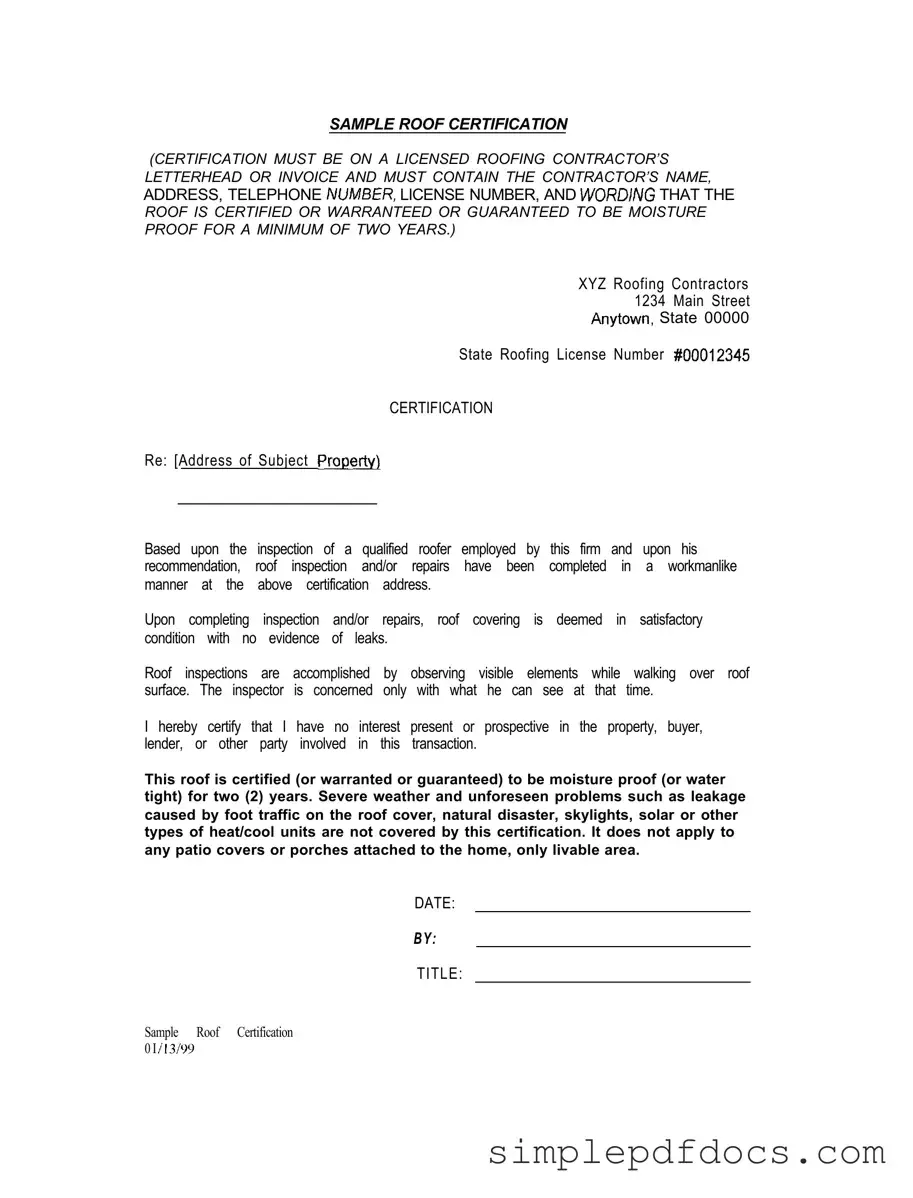Fill Your Sample Roof Certification Form
The Sample Roof Certification form is an essential document that verifies the condition and reliability of a roof following an inspection by a licensed roofing contractor. This certification serves as a guarantee that the roof is moisture-proof for a minimum of two years, providing peace of mind to property owners and potential buyers. It includes important details such as the contractor's information and the specific property address, ensuring transparency and accountability in the roofing industry.
Get Document Here
